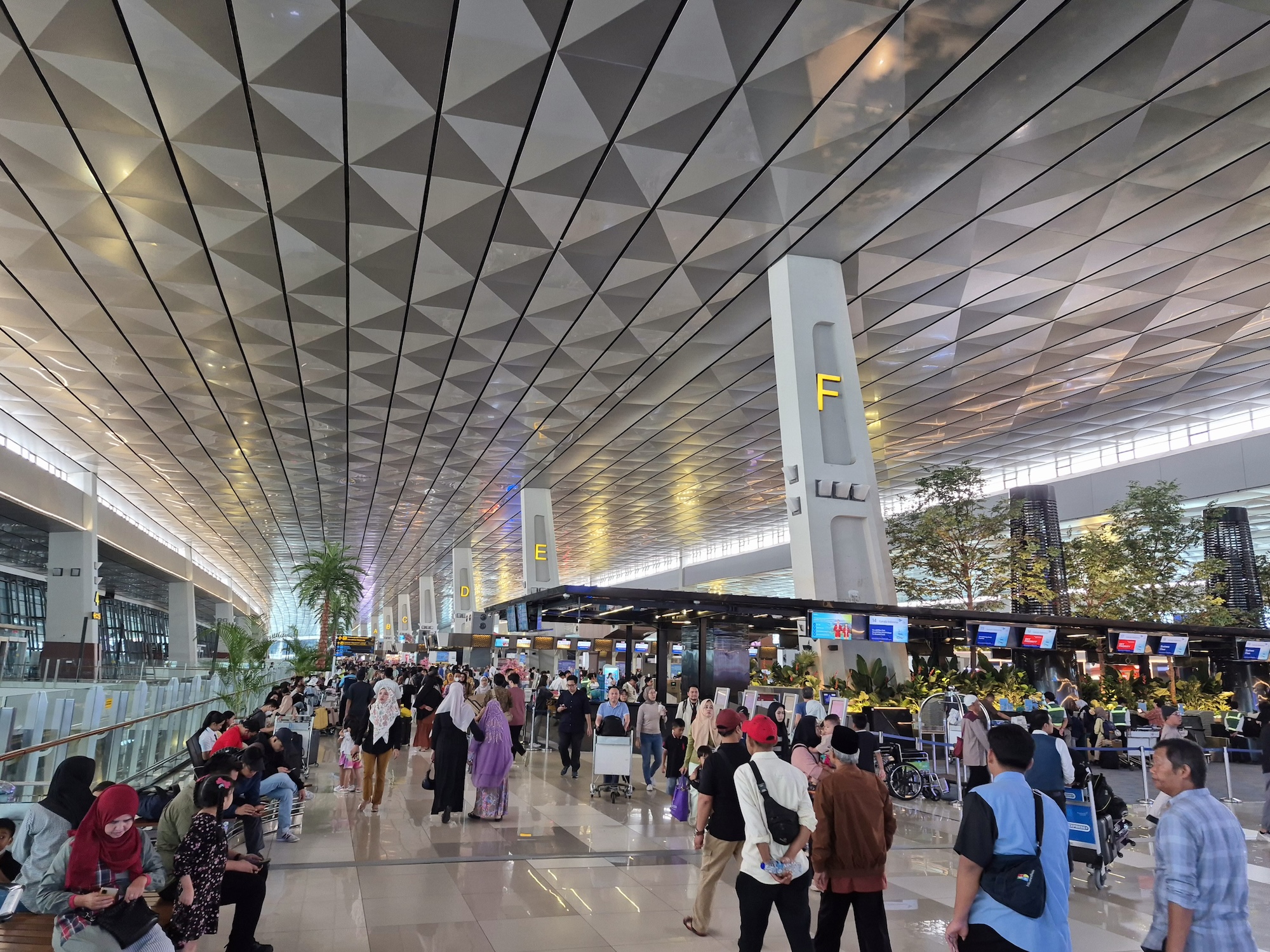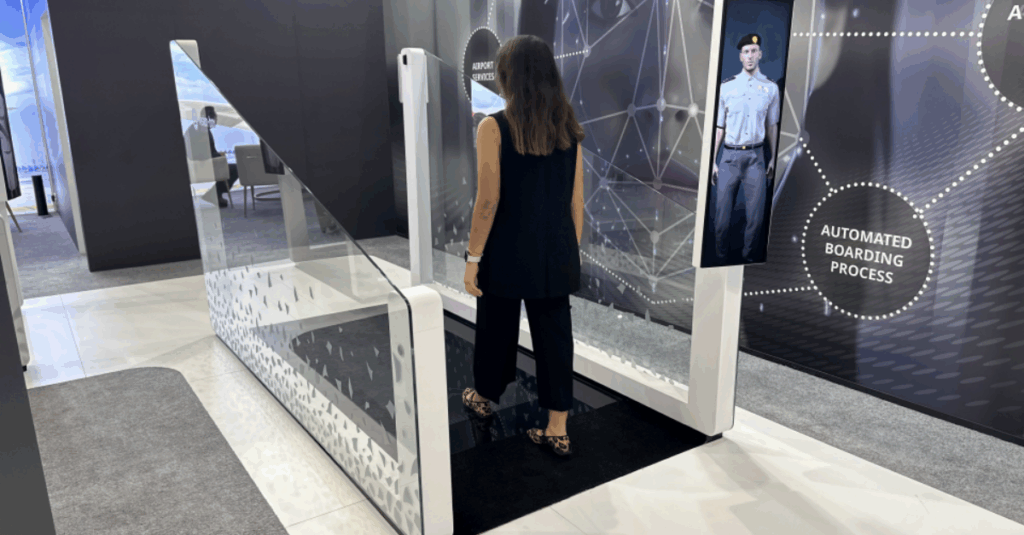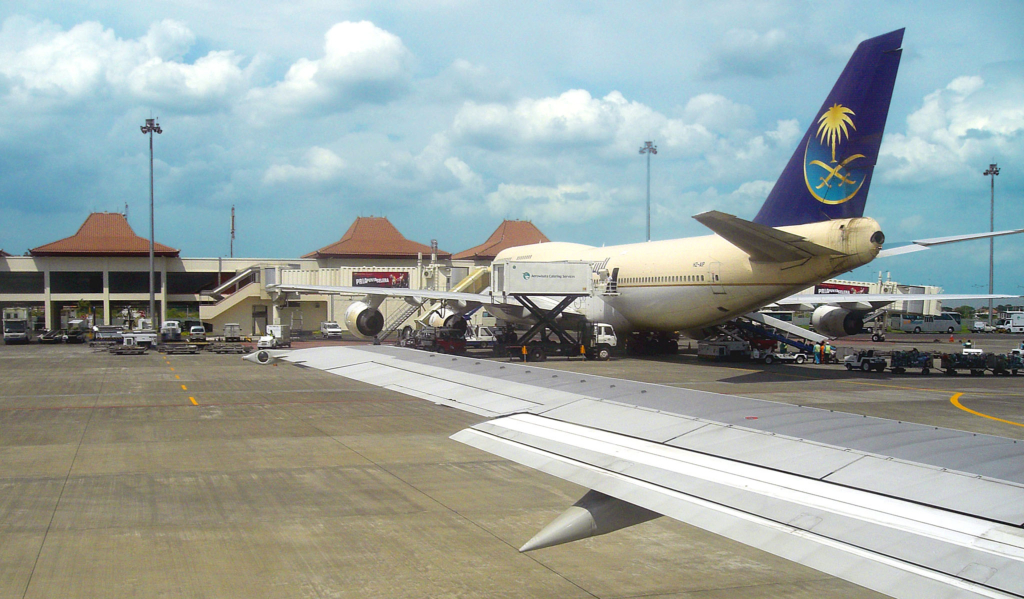Author: Marisa Garcia

Indonesia’s Directorate General of Immigration has become the first authority to implement biometric corridors at scale using Amadeus’s new “biometrics on-the-move” technology.
This AI-enabled system validates passenger identities as they walk through wide corridors, eliminating the need for passengers to stop and manually present documents to a border guard or at a counter.
Biometrics on the move streamlines travel for registered travellers
These biometric corridors are initially designed to assist elderly and disabled travellers who need special assistance, aligning with Indonesia’s goal of integrating transformative technology for all.
Travellers who qualify can register to use the new corridors via the ‘All Indonesia’ app, which combines immigration, customs, health, and quarantine declarations into a single digital platform.
Travellers share their passport details with authorities before their travel day, allowing the immigration service to conduct background checks before they arrive at the airport.
Once they reach the immigration checkpoint, travellers walk through the dedicated corridor, which scans their faces and compares them with the photo on file to accurately confirm their identity. Photo: Amadeus

Three Amadeus Seamless Corridors are already fully operational at two of Indonesia’s international airports—two biometric corridors at Jakarta airport and a third at Surabaya.
They support the existing 243 automated border control gates. Indonesia’s immigration authority plans to eventually extend the use of these biometric corridors to all passengers throughout the country’s airport network.
Indonesia sees a 10-fold increase in border crossing capacity during the Hajj pilgrimage
Indonesia’s biometric corridors underwent a stress test, facilitating the arrival of Hajj pilgrims. Indonesians are the largest group of Hajj pilgrims in the world, with an estimated 220,000 people travelling between Indonesia and Saudi Arabia this year.

The apron of Juanda International Airport, Surabaya, Indonesia. Showing Saudi Arabian Airlines Boeing 747 refuelling and reloading food, beverage, and cargo. Saudi Airlines is particularly serving Indonesian Hajj pilgrims to Mecca. Photo: Gunawan Kartapranata | Wikimedia Commons
During the pilgrimage, each biometric corridor supported over 30 border crossings per minute at peak times, representing a more than tenfold increase in border-crossing capacity compared to biometric eGates. Over 50,000 Hajj pilgrims in all were admitted to the country using the new biometrics-on-the-move technology for identification.
Amadeus and Sinergi Teknoglobal collaborate on Indonesia’s Seamless Corridor implementation
The Seamless Corridor deployment at Indonesian airports was carried out in collaboration between Amadeus and Sinergi Teknoglobal Perkasa with the Indonesian Immigration Department.
“By combining global expertise with local innovation, we are not only delivering world-class border solutions but also empowering Indonesian teams through technology transfer and capability building,” said Andi Syach, CEO of PT. Sinergi Teknoglobal Perkasa. “This close cooperation ensures that the solutions deployed today will continue to evolve and serve the nation’s long-term vision for smart, secure, and seamless travel.”
Rudy Daniello, Executive Vice President, AirOps, Amadeus, described the Seamless Corridor as the “jewel in the crown” of the company’s seamless travel. “In combination with innovations in digital identity and biometrics at key airport service points, it’s finally possible for airlines, airports and governments to provide a truly seamless, secure experience, free from document checks, queues and barriers,” he said.
During the pilgrimage, each biometric corridor supported over 30 border crossings per minute at peak times, representing a more than tenfold increase in border-crossing capacity compared to biometric eGates. Over 50,000 Hajj pilgrims in all were admitted to the country using the new biometrics-on-the-move technology for identification.
Amadeus and Sinergi Teknoglobal collaborate on Indonesia’s Seamless Corridor implementation
The Seamless Corridor deployment at Indonesian airports was carried out in collaboration between Amadeus and Sinergi Teknoglobal Perkasa with the Indonesian Immigration Department.
“By combining global expertise with local innovation, we are not only delivering world-class border solutions but also empowering Indonesian teams through technology transfer and capability building,” said Andi Syach, CEO of PT. Sinergi Teknoglobal Perkasa. “This close cooperation ensures that the solutions deployed today will continue to evolve and serve the nation’s long-term vision for smart, secure, and seamless travel.”
Rudy Daniello, Executive Vice President, AirOps, Amadeus, described the Seamless Corridor as the “jewel in the crown” of the company’s seamless travel. “In combination with innovations in digital identity and biometrics at key airport service points, it’s finally possible for airlines, airports and governments to provide a truly seamless, secure experience, free from document checks, queues and barriers,” he said.
A technological shift years in the making
In an interview with AGN, Jeff Lennon, SVP Border Authorities at Amadeus, emphasised that Indonesia’s success reflects more than a decade of R&D and on-the-move biometric pilots worldwide, resulting in “a full asset, biometrics, R&D capture, matching, improving pose, all the techniques you have right now.”
The core innovation of the Seamless Corridor lies in a multi-camera acquisition pipeline that captures multiple faces and bodies at walking pace.
“We capture all faces, moving bodies… combining not only facial recognition, but also 3D imaging,” Lennon said.
Lennon credited Indonesia’s Hajj operation’s success to the effective definition of the passenger population through the pre-registration requirement.
“We are creating small galleries of arriving flights. We are not talking about a large central database,” he said. “Comparing one to one or one to many, against eight or ten thousand faces, with very low false acceptance and false rejection.”
Countries are “moving at different paces” on biometric adoption
Lennon underscored that global adoption of biometrics is uneven — not due to technical limitations, but varying regulatory and policy contexts.
“The world is moving at different paces,” he said, adding that “the right vision, the right articulation between the stakeholders,” can assist adoption.
Several world regions are significantly ahead in biometric adoption.
“The US has been doing [this] for many years now,” Lennon said. “Australia has been experimenting… the Middle East, obviously. And I think the UAE is maybe the most advanced country in that respect.”

Photo: Emirates
Adoption is also accelerating in Asia Pacific. “We know that some of the APAC countries that we are working with are already facing very decent rates of adoption,” Lennon said.
There is a mixed picture in Europe where stricter data protection regimes restrict adoption, but there have also been pockets of advanced implementation.
“Finland is the most prominent example of a visionary government that has articulated a smart process, still fully compliant with regulation,” he said, highlighting the country’s shift to fully contactless kiosk-to-gate processing. “Your face is the key to your EES file and border control check, and you can cross the border in four or five seconds.”
Adoption is also accelerating in Asia Pacific. “We know that some of the APAC countries that we are working with are already facing very decent rates of adoption,” Lennon said.
There is a mixed picture in Europe where stricter data protection regimes restrict adoption, but there have also been pockets of advanced implementation.
“Finland is the most prominent example of a visionary government that has articulated a smart process, still fully compliant with regulation,” he said, highlighting the country’s shift to fully contactless kiosk-to-gate processing. “Your face is the key to your EES file and border control check, and you can cross the border in four or five seconds.”
Biometric adoption barriers are human, not technical
Globally, Lennon said the biggest hurdle is not capability but public understanding and coordinated communication. “For me, the biggest challenge right now: How do you bring adoption? How do you make it easy, visible, so that people understand it and it becomes natural,” Lennon said.
He stressed that public consent and flexibility remain core principles of successful biometric adoption, leaving passengers in control of when their biometric data is used. “Bottom line, we as travellers, are in control. If we don’t want to go through it, we go for a manual process,” Lennon said.
Countries where government, airports, and airlines collaborate tightly tend to move fastest—as is the case in the UAE.
“Dubai is amazing,” Lennon said. “I onboarded on the Emirates app… crossed the border… and boarded the plane just with my face. It’s a reality.”
That level of integration is a global benchmark. “These are great platforms for others to get inspired,” Lennon said.


No comments:
Post a Comment